Growing eggplants, or "aubergines" as they are commonly known in Europe, is becoming increasingly popular among gardeners and hobby farmers.
In this article, we will discuss the high-yielding hybrid Fabina F1, its cultivation features, and advantages.
Table of contents
Hybrid Description
This hybrid was registered in the EU Plant Variety Database in 2007 and is recommended for outdoor cultivation in southern European regions.
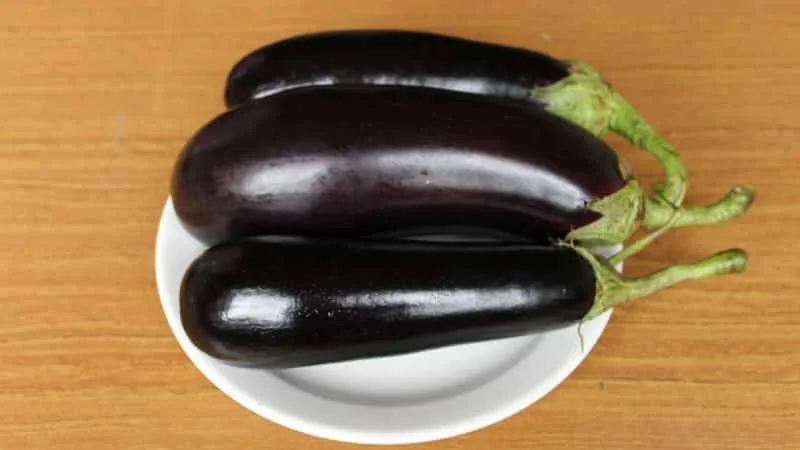
Key features:
- Long fruiting period, lasting until November in some regions;
- Disease-resistant;
- High-yielding variety;
- Uniform fruit ripening;
- Long shelf life when fresh.
Hybrid characteristics:
- Early maturity – 70-90 days from germination to technical ripeness;
- Plant height – 60 cm, no staking required;
- 6-9 fruits per plant;
- High yield – 5-7 kg per m²;
- Fruit length 20-23 cm, weight 190-210 g, diameter 5 cm;
- Cylindrical, elongated shape;
- Thin, glossy, dark purple skin;
- Greenish-white flesh, no bitterness, few seeds;
- Excellent taste – distinct mushroom-like flavor.
Other eggplant varieties:
Low-maintenance and delicious eggplant "Black Beauty"
Care tips for the "Dusky" eggplant variety and its benefits
High-yield early-maturing eggplant "Moneymaker"
How to Grow Fabina F1
Fabina F1 cultivation follows standard hybrid eggplant practices. Since it’s a hybrid, saving seeds is not practical. When purchasing seeds, always check the expiration date.
Before sowing, warm the seeds for 4 hours at 25-30°C or 40 minutes at 50°C. Disinfection is optional – the manufacturer has already treated them. However, soaking in a growth stimulant (such as seaweed extract) is recommended.
Important! Use fertile, neutral pH soil for seedlings. Heavy soil may cause disease. Garden soil mixed with compost, sand, peat, and ash works well – a 2:1 ratio of soil to compost is ideal.
Sowing time depends on growing conditions and location. For greenhouses, late January or February is suitable. For open ground, sow 60-65 days before transplanting.
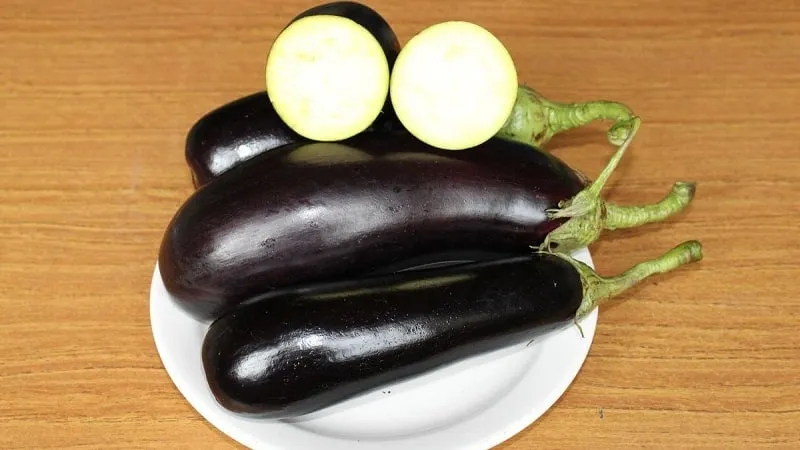
Growing Seedlings
Eggplants dislike transplanting, so sow seeds directly into individual pots. Plant 3-4 seeds per pot, 0.5-1 cm deep. Water with room-temperature water as needed. Germination takes 7-12 days. If multiple seedlings sprout, keep the strongest and trim the rest.
If using trays, transplant seedlings at the 3-4 leaf stage. Fertilize 10-12 days later with a diluted organic fertilizer or a balanced NPK mix (e.g., 10-10-10).
Transplanting
Harden off seedlings 1.5-2 weeks before transplanting by exposing them to 15-17°C temperatures. Move them to a greenhouse or sheltered outdoor area if weather permits.
Once frost risk has passed, transplant Fabina F1 to its final location. This hybrid tolerates cool weather and temperature fluctuations well.
Ongoing Care
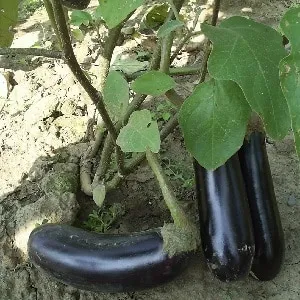 Fertilize two weeks after transplanting with compost tea or diluted poultry manure mixed with wood ash. Alternatively, use a balanced mineral fertilizer. Repeat after 3 weeks.
Fertilize two weeks after transplanting with compost tea or diluted poultry manure mixed with wood ash. Alternatively, use a balanced mineral fertilizer. Repeat after 3 weeks.
Since Fabina F1 is compact, space plants 40x80 cm apart for optimal growth and airflow.
This hybrid requires consistent moisture – water twice weekly. Avoid soil crusting by light cultivation after watering. Mulch with straw to retain moisture. Water at the base to prevent leaf diseases.
Note: Fabina F1 prefers warm water. Cold water (e.g., from a well) may stress plants.
Regularly remove weeds to reduce competition for nutrients and water.
Diseases and Pests
Poor cultivation practices may lead to diseases:
- Late blight (caused by excess moisture) – remove affected leaves and treat with a copper-based fungicide;
- Anthracnose (from crop rotation neglect) – rotate planting locations annually;
- White mold (from cold, wet soil) – remove infected plants and apply a 0.5% copper sulfate solution.
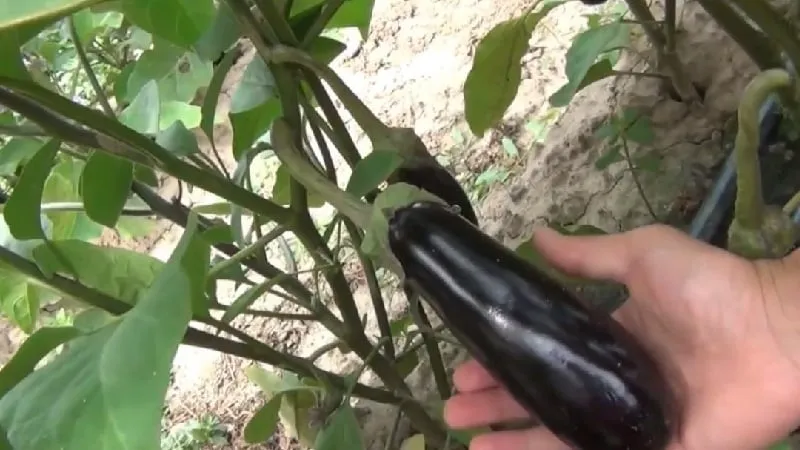
Common pests:
- Colorado potato beetle – handpick adults and egg masses, or use spinosad-based insecticides if infestations are severe.
- Spider mites – check leaf undersides; treat early with insecticidal soap or neem oil.
Harvesting and Usage
 Harvest Fabina F1 at technical maturity. Cut fruits weekly with 2-3 cm of stem attached. Ripe eggplants should have firm flesh with immature white seeds. Delayed harvest leads to tough, bitter flesh.
Harvest Fabina F1 at technical maturity. Cut fruits weekly with 2-3 cm of stem attached. Ripe eggplants should have firm flesh with immature white seeds. Delayed harvest leads to tough, bitter flesh.
This hybrid stores well – under cool, dry conditions, fruits last 2 weeks to 2 months.
Eggplants are rarely eaten raw. They can be grilled, roasted, pickled, or used in stews, ratatouille, and Mediterranean dishes.
Nutritional benefits: Rich in potassium, magnesium, iron, and vitamins B1, B2, and B6. Supports heart health and lowers cholesterol.
Pros and Cons
Advantages:
- No staking needed;
- Early, uniform ripening;
- Extended harvest period;
- Tolerates temperature swings;
- Disease-resistant;
- Attractive appearance;
- Minimal seeds;
- Good storage qualities.
Disadvantages: Prickly calyxes and high water requirements.
Grower Feedback
Gardeners praise Fabina F1’s yield and flavor:
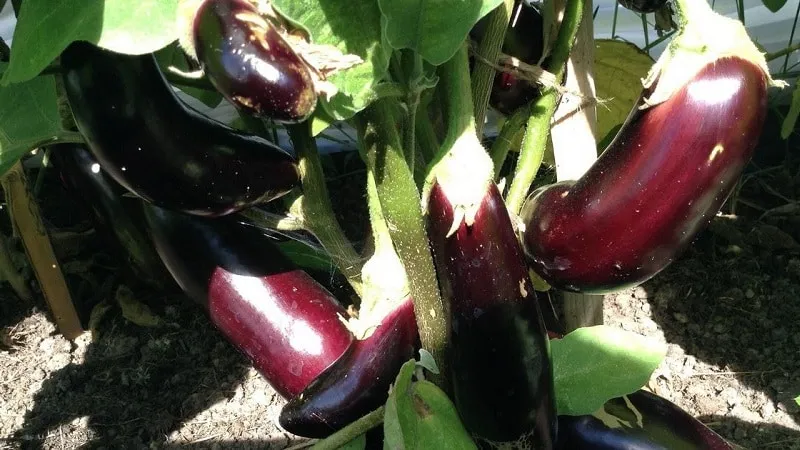
Thomas, Provence: “Fabina F1 is incredibly productive and early. The flavor is superb – no bitterness, just creamy texture.”
Sophie, Tuscany: “My first time growing eggplants, and Fabina F1 exceeded expectations. Thin skin makes cooking effortless.”
Conclusion
Even a small planting of Fabina F1 will provide abundant harvests for fresh eating and preserves. This hybrid fruits until frost with minimal disease issues, making it a top choice for European gardeners.
Its exceptional flavor and versatility ensure it will become a kitchen favorite.







